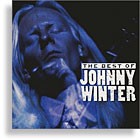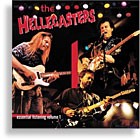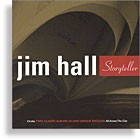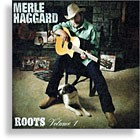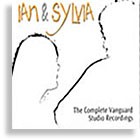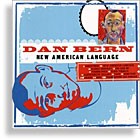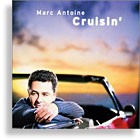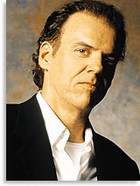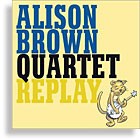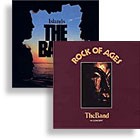Over the past three decades, John Hiatt has emerged as one of America’s most inventive songwriters, covering the genres of rock, blues, acoustic, folk, and new wave.
As Hiatt developed his own songwriting technique, artists as diverse as Bob Dylan, The Everly Brothers, Three Dog Night, Iggy Pop, and Paula Abdul have taken notice and covered his tunes. In the late ’80s, both Jeff Healey (“Angel Eyes”) and Bonnie Raitt (“Thing Called Love”) hit platinum with Hiatt-penned tunes. More recently, Eric Clapton and B.B. King chose Hiatt’s “Riding with the King” as the title track for their Grammy-winning CD, and Hiatt himself was named artist/songwriter of the year at the 2000 Nashville Music Awards, as well as being nominated for a Grammy for his last CD Crossing Muddy Waters.
A musician who has always surrounded himself with great talent, including slide players extraordinaire Ry Cooder and Sonny Landreth, Hiatt recently reunited his longtime backing band, The Goners, to record his latest effort, The Tiki Bar is Open, on Vanguard records. Joining Hiatt and Landreth in The Goners are bassist Dave Ranson and drummer Kenneth Blevins. The resulting effect on The Tiki Bar is Open is one of both raw energy and melodic charm.
A longtime collector of both vintage and oddball guitars, VG recently caught up with Hiatt.
Vintage Guitar: Congratulations on the CD with The Goners. What made you decide to reunite the band after 13 years?
John Hiatt: No real reason, but there was no reason we broke up, for that matter. I just started thinking about them, and thought about wanting to make music with them again. We started recording again, and wound up having a lot of fun making the new CD!
The Tiki Bar Is Open is very rootsy, but has a variety of styles including straight-ahead rockers, melodic ballads, and a few cosmic touches. Any particular common thread behind the album?
There really wasn’t any common thread behind writing it, since a few of the songs were already written. Once I got The Goners back together, I wrote four or five more, so the band really influenced a lot of it.
So I guess the common thread, musically, is working with that band again. We have a good thing when we get together. Coming from Louisiana, they don’t have the same boundaries, as far as music, as the rest of us. Down there, the fact that it is so multicultural has influenced music in so many different ways. And it seems Louisiana musicians tend to mix it all together. This serves my music well, because I work in four or five different styles.
“Farther Stars” is an incredible tune, with a kind of psychedelic, atmospheric double-tracked Eastern vibe. What inspired it?
It’s all those acid trips finally paying off (laughs)! I wrote the tune about three years ago, and as far as the musical part, it was written around that repeating, underlying riff.
We cut it as I showed the guys the chord changes. And while I was doing that, Jay Joyce -the producer, and a musician himself – was cooking up one of his drum loops, and we started rolling tape. And what you hear is what we did.
On Sonny’s slide, it’s called a Space Station – a weird pedal by Roland that allows you to mix the effect. It’s kind of orchestral.
Going back to the early days, what got you into playing and songwriting in the first place?
So many influences, really. I picked up a guitar at age 11 – a piece-of-junk Stella. Within six months, I started a band with two other kids in my school who also had started playing around the same time. It’s interesting that you ask because I recently stumbled across a playlist from that period that my mother had saved. On that songlist, there were a lot of tunes by The Kingsmen (laughs); not only “Louie Louie,” but their version of “Little Latin Lupe Lu” and a few others. We did some Beach Boys stuff, some Mitch Ryder. Basically a lot of white guys with black influences.
Did you write your own music from the get-go?
Yes, also on this early playlist were songs that I had written; one was called “BethAnn” which was about a girl in sixth grade who was sort of an “early developer” (laughs)! Something to get her attention!
Do you remember the first good guitar and amp setup you had?
I sure do. Within a year of starting to play, my father bought me a Gibson ES-175 – single pickup from the ’50s – so it was already vintage! He bought that with a tiny Gibson amp with an 8″ speaker. $100 for the combo. And within about two years, it was stolen. That was traumatic!
Do you prefer vintage instruments to new ones?
On the acoustic side, most of the guitars I play live are newer Gibsons. Ren Ferguson at Gibson has really been responsible for them making great acoustic instruments again. One of my J-45s is from the late ’80s Bozeman period, and it’s just great. Most of the acoustic stuff I’m doing is with these newer Gibsons.
For the electrics, I’ve played the same one since 1983 – a ’57 Fender Telecaster, all original except the pickups have been gone over. Nick Lowe gave me the guitar, and it’s white with a white pickguard and a maple neck. It’s a great guitar.
What are some of your prized guitars?
I was on a tear four or five years ago, buying old low-end stuff. I’ve got a few old Harmonys – a Stratotone and Meteor. They have great pickups on them – the ones with a gold mesh grille underneath three chrome stripes. Those pickups are real howlers! Ry Cooder uses one of these on one of his slide Strats. They just scream.
I’ve also got a few old Silvertones with the lipstick tube pickups, an old two-tone Kay from the ’50s – it’s just like a chunk of wood in a small Les Paul shape – with one pickup. It’s also quite a howler! There’s also a Silvertone hollowbody that looks like a Country Gentleman, with two DeArmond pickups.
I’ve got a couple of Danelectro convertibles, which I call my “kitchen table” guitars. And my main “writing” guitar is my ’47 Gibson LG-2.
When it comes to songwriting, how do you know when you’re inspired enough to write a tune? What usually comes first – lyrics, music, or hooks?
It’s always the same process, I just sit down and start playing because I like playing, and more often than not, it leads to some kind of melody or chord changes. The songwriting process is just so ingrained in me that it just sort of happens.
But I don’t push it, meaning I don’t sit down and try to write stuff. It comes when it comes, and sometimes I’ll go a couple months without writing things. Of course, when I was younger, that used to scare me. But I don’t worry about it anymore.
You’ve had everyone from Bob Dylan to Paula Abdul cover your songs. Which are among your favorite versions?
As far as people who have covered my tunes, I have a lot of favorites.
Bob Dylan was a major influence on me… and his singing of “The Usual” was a thrill, I thought he did it really great. I liked Johnny Adams, the singer from New Orleans who died a few years ago. He sang a couple of my tunes I thought were great. I love Buddy Guy’s version of “Feels Like Rain.” I love Willie Nelson doing “Original Sin,” of course Bonnie Raitt, who has done three of my tunes. I love B.B. King and Eric Clapton doing “Riding With The King.” That was really great for me.
As far as on the stage versus studio, what are you playing these days for acoustic and electric?
For the acoustic live, I use the Fishman pickup system on the Gibsons. I have for about 10 years, and I’m really happy with it. I use the little Fishman outboard preamps going direct into the board. In the studio I’m also using the Gibson acoustics, mic’d. For the microphones, I use Shure 57s for a scratchy, Rolling Stones type of acoustic sound, but we’ve also used Shure SM7s, Shure M49s, and old Neumanns. We also use a number of different vocal mics and we’ve been running a lot of them through an old RCA tube mic mixer, which looks like a piece of military gear with big knobs and one huge VU meter on it. This works great particularly with ribbon mics… what a wonderful sound! I found out about this mixer through Michael Wadd, a guy I buy a lot of old mics from. He befriended Les Paul at one point, who said that these old RCA mixers are the key ingredient in getting a great sound out of a ribbon mic.
How about amps?
My electric setup, live and in the studio, is just the ’57 Tele through a reissue Vox AC-30. We did a few mods, and I love the amp, especially with the Telecaster. That great Tele midrange rhythm punch really comes through.
Are there any instruments you’d like to own?
Oh man, sure. I’d love to have another ’57 Tele, and I’ve been on the lookout for one for awhile. It doesn’t have to be perfect – I want a player. I’d like to get another just like the one I have, white pickguard on a off-white body.
Acoustically, I’d love to have an old Gibson J-200, a buddy of mine’s got a ’57 tobaccoburst one, and it just sounds incredible. And maybe another LG-2.
You’ve been blessed to play with some amazing musicians, including Ry Cooder, Jim Keltner, and Sonny Landreth? What drew you to them, and what do you look for in a musician?
For guitar players, I like working with those who play it like they’re singing it. Like another voice. Ry and Sonny are perfect examples of that. You can hear it in their playing; it is their voice. And of course, their rhythm-based playing is most important, since my whole thing is based on rhythm. There are an amazing number of great lead guitarists who are terrible rhythm players.
Ry’s slide on “Lipstick Sunset” (from 1987’s Bring the Family) has got to be one of the finest on record…
It is beautiful. It’s funny you mention that, because when we were listening to the playback of that song, he started criticizing himself. He said, “I’m playing ‘Danny Boy’ for Godssakes!” I said, “Well, it sounds great, whatever the hell it is!”
What event (or album) do you consider among the highlights of your career?
Well… there are a lot. I’m really proud of the number and varied types of artists who have cut my songs over the years, so that’s something I’m proud of. Having B.B. King and Eric Clapton, Bob Dylan, Iggy Pop, and a number of others do my songs is just a great feeling. Playing with Little Village, especially making Bring The Family with them, kind of set me in the right direction in terms of how to record and a number of other ways. Being on the bill with B.B. King and Buddy Guy on the latest tour, and being able to rub shoulders with those two giant men – and they are giants in all aspects of manhood!
Are there any milestones that you’ve yet to achieve?
You know, I’m not really goal-oriented in that respect. I tend to just look at things in terms of chunks of time and where I’m moving and where I’m at. Right now, I feel like I’m running on all eight cylinders, and I’ve got a great situation with Vanguard records. We do a new deal with them each time we make a record, so I love that. We own the masters for the last few albums, so it’s a new era for me in that respect. I’m really enjoying it, and I’ve got a great bunch of people around me, a great band. What’s not to love?
Photo courtesy of Vanguard Records.
This article originally appeared in VG‘s Sept. ’02 issue. All copyrights are by the author and Vintage Guitar magazine. Unauthorized replication or use is strictly prohibited.
